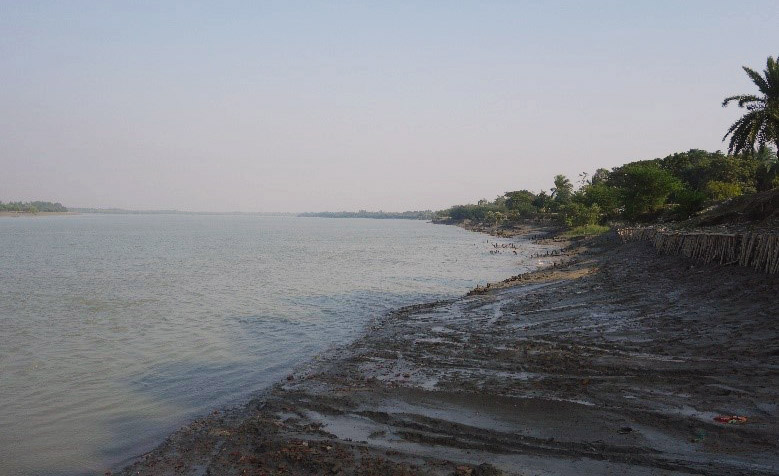
Harbouring one of the largest mangrove forest tracks in the world, the Sunderbans cover a sizeable area in southern Bangladesh and east India. Formed by the confluence of three major rivers, the deltaic region which the Sunderbans are part of, is famed for its tiger habitats and dynamic ecology. Researchers from a Norwegian Research Council-funded and Noragric-led project ‘Uncertainty, Climate Change and Transformation’ visited the area in January this year. They explored how the interplay between fluid deltaic ecology, climate change, natural disasters and socio-economic issues pose enormous challenges to human settlements on the densely inhabited islands of the Indian Sunderbans.
Ghoramara island, one of the project’s research sites, represents an extreme case. An impoverished island close to the Bay of Bengal, it has suffered from governmental neglect and is largely devoid of basic amenities. It has been scarred by Cyclone Aila in 2009 and offers few livelihood opportunities. Its most striking feature is that it is a ‘sinking island’. Lying below sea level and having its coastline gradually chipped away through erosion, its residents are gradually migrating. Their future, as in other inhabited islands of the Sunderbans, is uncertain and contested. Predictions of impeding catastrophe co-exist with narratives of persistence, creativity and survival.
As the world braces for the impacts of climate change and international actors grapple to find political solutions on the mitigation and adaptation front, the case of Ghoramara represents a microcosm of the kind of complex and interacting issues that extremely vulnerable population sections in the global south already face now, and more so in the future: Local and global environmental change, development neglect, poor policy and institutional design. Contrary to the popular imagery of impending disaster, project researchers also acknowledge and try to understand how local people – in many cases successfully – adapt and transform in challenging circumstances.
How do its people deal with uncertainty related to climate change? Models, projections and scenarios form a key part of established climate change science and understanding uncertainty, but tend to underplay its human and social dimensions. Local people experience climate extremes, its uncertainty and consequences on a day-to-day basis in ways that abstract models are not able to capture. This is where the project seeks to contribute and inform research as well as well policy. Project leader Lyla Mehta (Institute of Development Studies, UK / Noragric) puts it as follows:
Uncertainty is usually conceptualized from ‘above’ by experts and scientists in quantifiable ways. But these understandings ignore lived experiences of uncertainty – what we call uncertainty from ‘below.’ There is also the ‘middle’ – the knowledge brokers and interlocutors who seek to communicate between the two. It is in the middle wherein we, as a project, see ourselves placed.
Apart from the Sunderbans, similar questions are examined in different contexts. These include a megalopolis in India, Mumbai and a dryland area in the west of India, Kutch.
At the end of January, a workshop in New Delhi organized by the STEPS centre on Climate change and uncertainty from above and below invited key academic figures, policy makers and civil society actors to deliberate issues that revolve around understanding and dealing with uncertainty. These involved the presentation of empirical research findings from India, Africa and beyond, aside from discussing epistemological and conceptual questions. All of these contributed to rich discussions which will be reported in future blogs and included in a planned special journal issue.
More information on the project
by Hans Nicolai Adam, Postdoctoral Researcher, Noragric.
Photo credit: Hans Adam.
